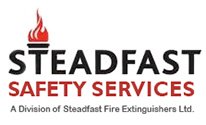Installing the right fire protection system is crucial for a workplace. As a matter of fact, the installation of the proper fire alarm system is required by law. If your workplace contains combustible or toxic gases, you will need to install flame and gas detection systems. This article takes a look at the flame and gas detection system in an effort to help you make the most educated choice when making your purchase.
Flame detection
The flame detection system will sense fire and respond as it has been programmed. You will find different systems on the market and they offer varying levels of fire detection. Flame detectors can activate the alarm, trigger the area’s fire suppression system or shut down the fuel line. It all depends on how the system has been programmed. If you are installing the flame detection system in the industrial furnace, the system will ensure that the furnace is lit properly. The infrared/ultraviolet flame detector is common in industrial plants. The system works by recognizing two radiation spectrums.
When shopping for a flame detection system, you need to be very cautious. You should select a system that has a great sensor and one that is explosion-proof. Experts in fire protection Toronto can help you invest in the best system.
Gas detection
Just like the name implies, this system detects gases. It can be programmed to sense gas leaks and respond by shutting the system down to avert a disaster. The system can also be programmed to alert the workers so that they can clear the area. The gas detectors normally check for the combustible gases such as propane, methane or gases like oxygen as well as toxic gases such as hydrogen sulfide and carbon monoxide.
You will be spoilt for choice when searching for a gas detector. The main ones are ultrasonic sensors and the semiconductor sensors. There are systems that can detect multiple gases whereas some will only detect one gas.
When there is little oxygen, the infrared combustible sensors will be the perfect choice. The sensor reflects light off a mirror and measures the light that is absorbed in the refraction. Although it can detect hydrogen, it is perfect for detecting ethane and methane gases.
The electrochemical toxic gas sensors can be calibrated to detect specific gases. More than 30 gases can be sensed by this system.
How to choose the right flame and gas detection system
There are many aspects of the sensors that you need to consider prior to selecting a flame and gas detection system. If your plant has many hot objects that can confuse the sense, you need to spend more time understanding false alarm immunity. The last thing you want is for the system to keep confusing fire with welding or sunlight.
You also need to think about the detection range. You want full coverage which should include areas you don’t expect would be impacted. The greater the range is the shorter the detection time.
Search for systems that are capable of self-diagnostics. Such systems will detect that the sensing path is clear and that the detector is working and the electric circuits are working properly.
Any hangar, warehouse or industrial plant that handles toxic or combustible gases must have a good fire protection system. Steadfast Safety Services can help find the ultimate system for your needs.





